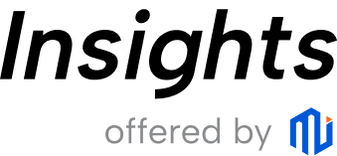Toyota and Avalanche explore blockchain network to tokenize mobility and vehicle ownership
Avalanche and Toyota Blockchain Lab have revealed their research on creating a new blockchain layer to “orchestrate trust and unlock mobility’s value” through a blockchain-based intermediary network called the Mobility Orchestration Network (MON).
According to the Toyota Blockchain Lab, “MON is a neutral network designed with the premise of interoperating with multiple, distinct existing networks for securities, payments, insurance, lending, and mobility services. While MON serves as the ignition point for this cycle, its primary role is to orchestrate the multiple networks involved in the circulation of mobility’s value.
This initiative highlights another emerging use case for blockchain technology in the future of transportation. Investors can raise their funds and track their robotaxis via the blockchain. This means that the entire business model can be built on-chain from scratch.
MON ownership in digital form
MON uses tokenization to change fungibility progressively. The developers propose that, at the moment of manufacture, the original equipment manufacturer (OEM) issues the vehicle’s ownership as a Non-Fungible Token (NFT).
This NFT will be the first official record that establishes the vehicle’s unique identity. It will be linked to its mobility-oriented account (MOA) in a way that can’t be separated.

The VehicleOwnership token is a simple ERC-721 token representing a vehicle’s ownership right. To connect mobility as an asset to existing finance and build the framework for securitization, a valid point of ownership against third parties is required.
The VehicleOwnership token gives the actual car the idea of “ownership” and adds a thin layer of security for financial access, like a Hardware Abstraction Layer. The MOA keeps attribute data and operational attestations; therefore, this token acts as a basic and interoperable ownership root.
Separate networks exist in the same country
There will be many separate networks in the same country or area, each with its technologies and governance models. Capital networks will include payment networks, security token systems, and more.
MON will be used in different places, taking into account the rules and ecosystems of those places. Local versions of MON must be able to communicate to each other so that used vehicles can be traded across borders and global capital is put into regional fleets.
For security and scalability, not all information can live on-chain. However, by making selected fields or their hashes accessible on-chain, one can always check the current status, while owners access more information off-chain.
The MOA will use a smart account to enable a complex Real-World Asset (RWA) like mobility to function autonomously on the blockchain.
It also has a mirror architecture to reconcile the conflicting requirements of real-time operational immediacy and ledger finality by using two accounts with distinct roles. Its modular design possesses an extensible structure that can keep pace with future changes in requirements.
Other Robotaxi infrastructure key players
Regulators and manufacturers still need to get on board to make the idea of fully autonomous robotaxi fleets a reality. Manufacturers are the hardest group to get on board.
Hirata from Ava Labs said that regulators and carmakers need to work together to make it possible to preserve official records on blockchain ledgers and to allow use cases like on-chain ownership transfers.
“There’s always an official record in different countries, different formats. So having that and the manufacturer working together on a blockchain is the most key task that we have to tackle,” Hirata said.
To that end, tokenizing mobility could become the next big thing for crypto investors because of the latest proof-of-concept from Toyota and Avalanche.
Tracking mobility for automobiles is still hard, and future use cases will need “lots of systems” and decentralized apps to support its tokenization. Meanwhile, other companies are also using the Avalanche blockchain to tokenize real-world assets (RWA).
If you're reading this, you’re already ahead. Stay there with our newsletter.



